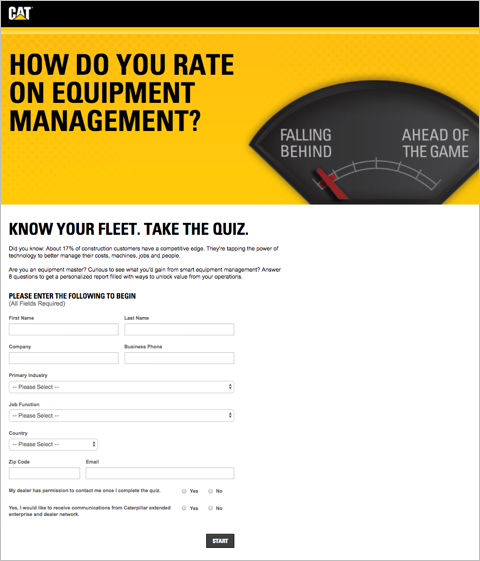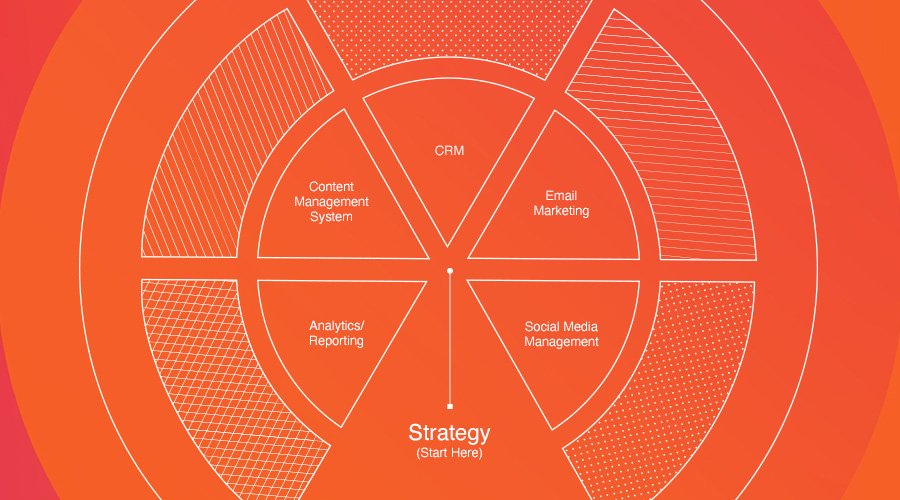We’ve all done it. We’ve all filled out a “Which Character Am I?” or “Where’s My Next Vacation?” quiz or used an online calculator to assess yourself. While the majority of these are purely for entertainment, B2B marketers are transforming this into an actual lead generating tactic.
Let’s start off by talking about what marketers mean when the word “calculator” is thrown around. We really aren’t talking about a calculator in the traditional sense that one would think. We’re talking about apps, widgets and digital tools employed by companies to, A) help the end user in some way and, B) provide the company with information to begin nurturing that user as a lead.
So, while we aren’t necessarily doing our calculus homework, we are working with Fortune 100 companies to drive sales leads to their business using interactive online tools.
Why Use Online Tools
Customers not only look for a suite of tools from their favorite companies, they are coming to expect these tools. Whether it’s a productivity calculator or a credit application, B2B businesses offering helpful tools can land a new customer or a keep an existing one happy.
Based on your goal, online tools can range from basic to advanced. Here are a few ways businesses are using calculators and quizzes.
- Self-assessment
- Diagnostics
- Calculate a budget
- Determine potential savings
- Idea generator
- And many, many more
Pro Tip: Think about what your audience would like to know. How to save more money? Is this product right for me? How much do I need? Whatever it is, make sure to offer value.
Take for instance, this Know Your Fleet quiz that Simantel helped Caterpillar create to assess the customer’s need for equipment management solutions. The user is willing to provide their information in exchange for an assessment.

It’s a win-win. And these experiences can be successful if done right. According to Demand Metric, “interactive content, such as apps, assessments, calculators, configurators and quizzes, generates conversions moderately or very well 70 percent of the time, compared to just 36 percent for passive content.”
Three Considerations When Planning Your Online Tool
1) Build a Personal Experience
The tactical arsenal of a calculator or tool app intrinsically offers a dynamic and personalized experience.
For many customers, they don’t want to sift through product information and compare notes with other customers. They want to work with a business that is transparent about their data and intel for the benefit and value of their customer community. Make sure to treat your interactive quiz as a digital, personalized conversation. This is a phenomenal way to build trust with a customer before getting to the sales team.
2) Strategize for Useful Data
Modern B2B markers are looking for modern B2B buyers.
And modern B2B buyers are looking for engaging, entertaining and informational content from potential vendors. Creating an interactive assessment is a way to add value while also collecting information on your buyer’s interests, preferences, needs, and buying process. Through this tactic, companies can collect useful data that their engineers and scientists can actually use. Data, like app flow and links opened, will help improve the user experience. Data, such as which numbers users are crunching and the most visited products, will help determine needs that your product can fix.
When creating your online tool, think carefully about what information is beneficial for your team. Strategize at the beginning and think about where this fits in with your overall cross-channel strategy. A solid strategy at the forefront will result in usable data.
3) Have a Follow Up Plan
The B2B marketplace is under heavy pressure to know their customers and prospects, and most importantly ‘get people in the funnel.’
In today’s extremely competitive landscape, marketing is responsible for supporting strict business metrics and web analytic targets. Suppliers are now taking the “Which Spice Girl Are You?” framework into product configurators, product selectors, financial readiness or recommendation tools. All in the name of leads.
But don’t drive leads just for the sake of collecting leads. This actually can cause more harm than good. Once a user completes the quiz or uses the calculator, make sure to have a routing plan for the lead. What’s your follow up plan? How qualified is the lead based on their results? How will you nurture this lead?
When to Use an Online Tool
If you are looking to engage or re-engage users, consider including a calculator or a quiz in your content marketing strategy. If you are having trouble moving potential customers past awareness and into engagement, this tactic may just be for you.
Interactive content is one of the best ways to create a rich user experience on your website. But it takes a significant amount of time to plan, create, launch and follow up for this to be successful. However, the outcome of engaging users can far outweigh the investment.
So, next time you fill out a “Which Game of Thrones Character Are you?” think about how you can be transforming this tactic to drive leads for your business.





